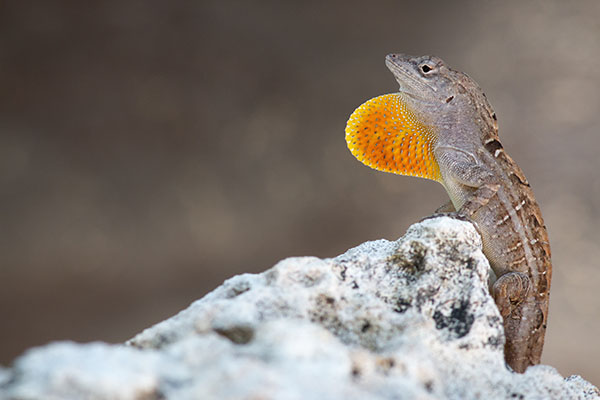2023-10-09 ジョージア工科大学

◆長期の野外研究が進化の理解に貢献し、進化は常に進行中であることを示唆しています。進化の理解は地球上の生命に関する洞察を提供し、人間が支配する世界で生命がどのように維持されているかを示しています。
<関連情報>
- https://research.gatech.edu/feature/evolution-lizard-study
- https://www.pnas.org/doi/10.1073/pnas.2222071120
ゆらぎ淘汰は、野生の生態学的コミュニティにおいて異なる種の表現型を維持する Fluctuating selection maintains distinct species phenotypes in an ecological community in the wild
James T. Stroud, Michael P. Moore, R. Brian Langerhans, and Jonathan B. Losos
Proceedings of the Natural Academy of Sciences Published:October 9, 2023
DOI:https://doi.org/10.1073/pnas.2222071120
Significance
Stabilizing selection has been widely invoked to explain why many species’ phenotypes experience little to no change through time. However, microevolutionary field studies have revealed that stabilizing selection is very rarely detected in natural populations. Here, we show that species’ phenotypes can be maintained through time in the absence of consistent stabilizing selection that continually favors a central optimal phenotype. Instead, species are maintained on fitness peaks through the accumulation of selection that fluctuates in form, strength, direction, or existence through many independent time periods. In multispecies communities, this accumulation of selection creates a rugged community-wide fitness landscape on which different species occupy divergent adaptive peaks separated by fitness valleys that reinforce species distinctness through time.
Abstract
Species’ phenotypic characteristics often remain unchanged over long stretches of geological time. Stabilizing selection—in which fitness is highest for intermediate phenotypes and lowest for the extremes—has been widely invoked as responsible for this pattern. At the community level, such stabilizing selection acting individually on co-occurring species is expected to produce a rugged fitness landscape on which different species occupy distinct fitness peaks. However, even with an explosion of microevolutionary field studies over the past four decades, evidence for persistent stabilizing selection driving long-term stasis is lacking. Nonetheless, biologists continue to invoke stabilizing selection as a major factor explaining macroevolutionary patterns. Here, by directly measuring natural selection in the wild, we identified a complex community-wide fitness surface in which four Anolis lizard species each occupy a distinct fitness peak close to their mean phenotype. The presence of local fitness optima within species, and fitness valleys between species, presents a barrier to adaptive evolutionary change and acts to maintain species differences through time. However, instead of continuously operating stabilizing selection, we found that species were maintained on these peaks by the combination of many independent periods among which selection fluctuated in form, strength, direction, or existence and in which stabilizing selection rarely occurred. Our results suggest that lack of substantial phenotypic evolutionary change through time may be the result of selection, but not persistent stabilizing selection as classically envisioned.


